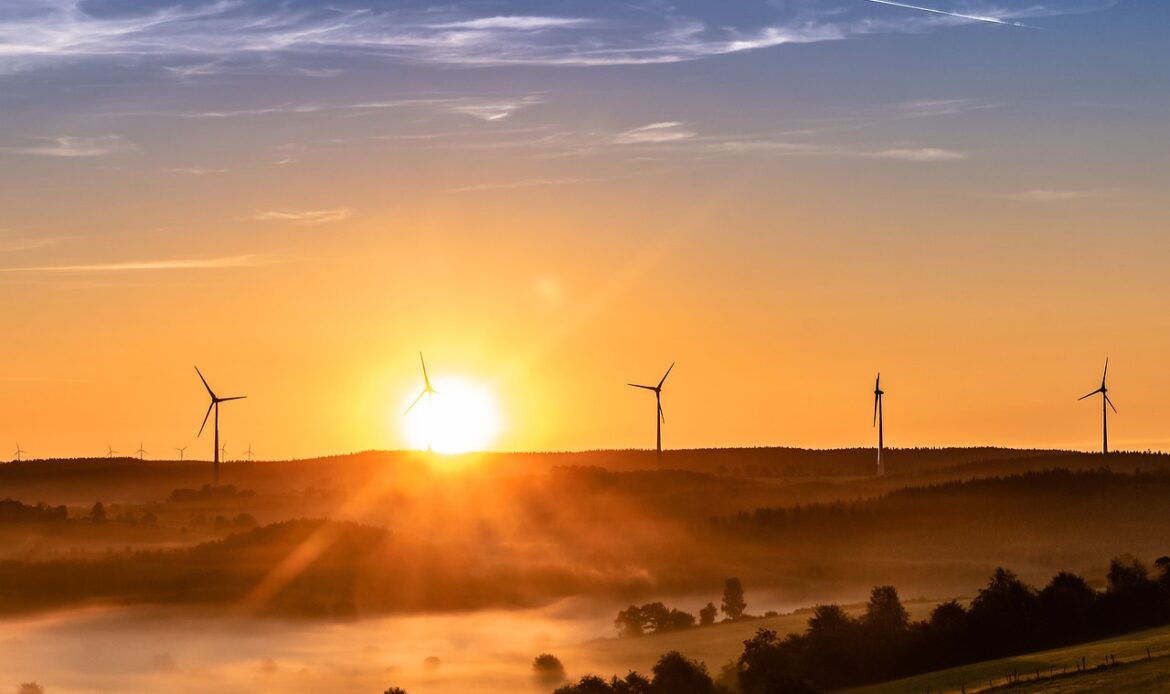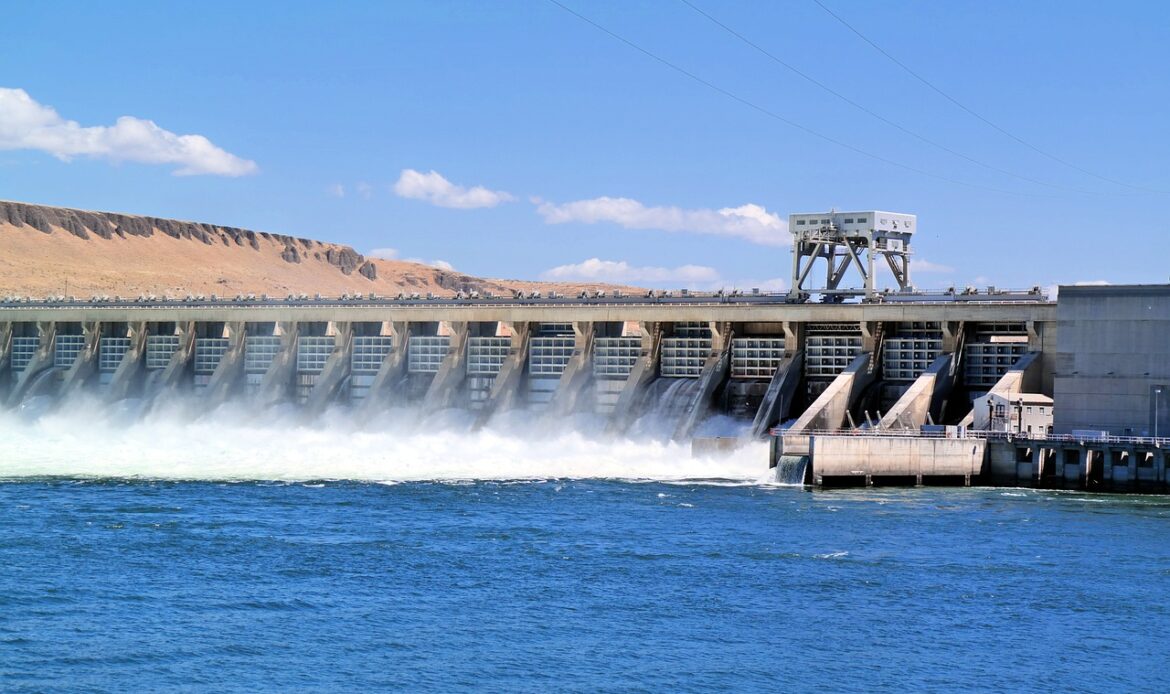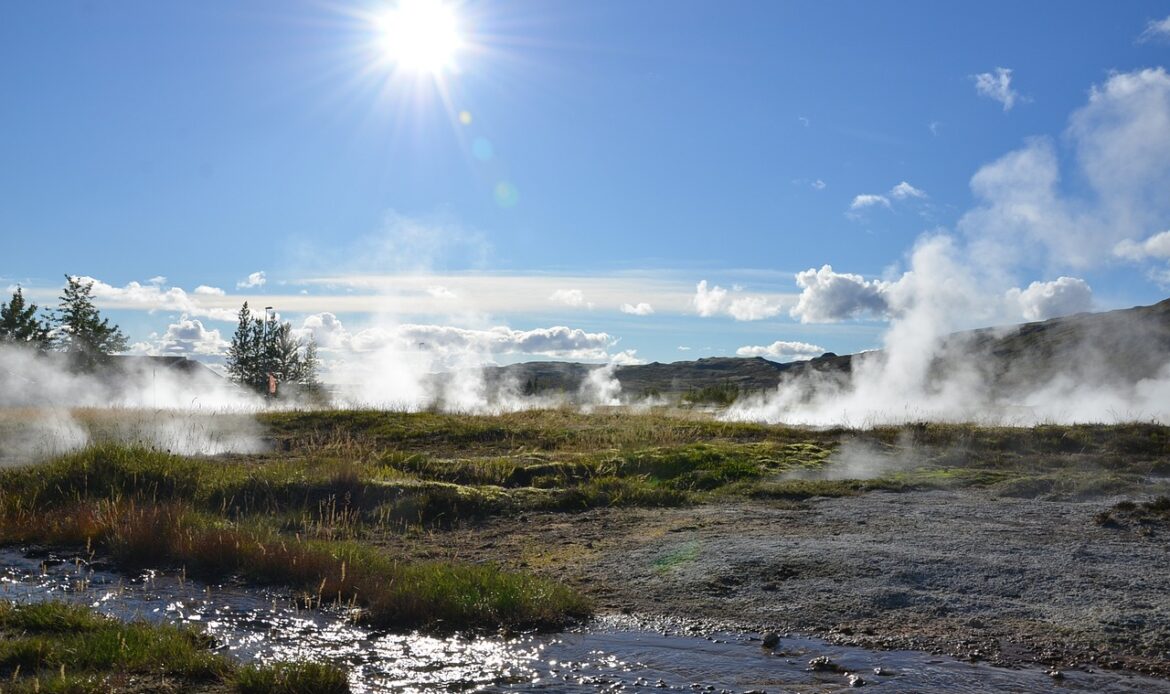Due to the world’s population of 8.1 billion people, natural resources have been increasingly exhausted and the demand for heat and electricity is unparalleled.
Multitudes of greenhouse gas (GHG) have been released to compensate for high energy needs, alongside years of human activity such as development, deforestation and 300 million tonnes of plastic pollution yearly. This has resulted in environmental degradation, challenges to food production systems, poor air quality and a prevalent climate crisis to name a few.
Renewable energy was first largely adopted in the UK in the 2000s with a notable increase in wind and solar energy. Before renewable energy, we depended heavily on nonrenewables such as coal, oil or nuclear power.
UK power plants generate electricity at a mass scale and distribute it through networks of high-voltage lines to different substations, then to power lines, and finally to homes, businesses and consumers.
These sources (coal, oil, nuclear and natural gas) release heaps of the greenhouse gas—CO2—into the atmosphere when burned for power. The atmosphere is a blanket around the Earth keeping it warm enough for us to live comfortably, however, the incessant burning of fuels enhances the greenhouse effect to unnatural levels, which will in time produce an inhabitable planet unless renewable energy amongst other swaps take place globally.
These natural sources will also run out, leaving us with major, problematic gaps in our resource systems. These sources also pose significant environmental risks, like polluting our drinking water by risking the release of toxic substances into water bodies.
This post goes into detail about various types of renewable energy and why they are absolutely integral to conquering GHG and climate change.
What is Renewable Energy?

Renewable energy is energy that can be replenished faster than it is consumed, making it sustainable and essentially unlimited, as opposed to natural resources like oil, coal, nuclear and natural gases which are all depleting with no return once they’re gone. Renewables provide energy security by lessening our global dependence on the planet’s limited fossil fuels and ensuring a supply that won’t run out.
Over time, technological advancements have made renewables like solar and wind more efficient and powerful, as well as significantly cheaper to produce. This has led to their growth in popularity and slow but sure takeover of harmful fossil fuels.
They have garnered increased investment and financing, as well as higher demand from growing public awareness regarding the detrimental nature of nonrenewable energy. It introduces new sectors, providing economic gains as well as major reductions in long-term energy costs. What’s more, ongoing research and development promises to further reduce their costs and improve their efficiency.
Alongside wind and solar, other key examples are hydroelectric, biofuels, geothermal and microgeneration energy, which I’ll explain further in the following paragraphs.
Types of Renewable Energy in the UK
Solar

Solar power is most recognisable for solar panels which convert sunlight into electricity, but is also used differently, such as solar thermal systems which absorb sunlight for the heating of water in industrial and domestic uses. It’s an abundant source of energy, with the sun not dimming out forever anytime soon.
Solar power grew in popularity in the UK particularly in the 2010s, encouraged by government-led schemes such as the Feed-in Tariff Scheme which incentivized widespread adoption of renewables by offering monetary gain for self-generated electricity (starting as high as £43.3p per kWh). It reduces electricity bills and operates at a low maintenance cost once installed.
So why doesn’t everyone live in a house made of solar panels? Loosely calculated, a one-bedroom house in the UK might take 10 solar panels to run for a full day. The average cost of 10 solar panels might be £4000-£6000 (depending on specific factors). It’s costly initially, but the panels typically pay themselves off after 7-10 years, or even quicker in the context of rising electricity prices.
Wind

In the UK, we are one of the first major economies to set a legally binding target of net zero emissions by 2050 and a key reason we are able to do so is our wind power capabilities. The UK is one of the global leaders of offshore wind power with 44 wind farms and over 2,500 turbines in total.
While wind power dates back ancient civilizations to milling grain and sailing, the development of modern wind turbines we know today didn’t happen until the late 19th century. The very first electricity-generating wind turbine was built by Professor James Blyth in Scotland in 1887, which he used to power the lighting in his cottage.
James Blyth’s was cloth-sailed and 10 metres tall, whereas a modern-day wind turbine tends to consist of steel, fibreglass or resin and towers at 80-100 metres tall achieving rotor diameters of up to 120 metres (the width of the circle made by the propellers).
Solar power is typically employed at a residential scale, whereas wind power tends to fall under commercial projects requiring large-scale energy production. Many private companies own turbines or wind farms and then sell and distribute this to consumers.
Hydroelectric

Hydropower is when electricity is generated using water such as river systems and dams. The currents of the water turn turbines linked to generators, hence the water’s kinetic energy turns into mechanical energy. Using water, it’s a brilliant renewable source that will fail to run out.
They are predominantly used in Scotland as its high rainfall and rugged terrain create an ideal condition for dam creation and water storage. This has redirected many consumers from traditional energy suppliers like Scottish Power to renewable energy specialists, such as hydropower plant operations, offering ‘green’ tariffs.
Some challenges are the ecological impact on marine life, by disrupting the water temperature, flow and transport of sediment, risking water pollution. These human-made dams at a large scale could be a hundred metres high, such as the Hoover Dam in the US and Nevada, but in the UK tend to be smaller scale river projects. We ensure that our constructed dams align well with our natural landscape, supporting local environments rather than obstructing where possible.
Biofuels

Biofuels are the conversion of organic matter, such as crop or food waste, into fuel that is used in transportation and generating electricity.
Crops such as rapeseed can be grown on farms for the production of biodiesel. The farmer harvests the crop and sends it to a processing facility where it is crushed to extract the oil. Rapeseed oil can be used for food products (making up 78% of Hellman’s mayonnaise), or refined through a chemical reaction called transesterification to be turned into biodiesel.
The biodiesel is then distributed to fueling stations across the UK. In some cases, it’s blended with the traditional fuel to be sold by petrol stations (e.g. Shell, BP), in order to aid the sequestration of GHG emissions.
Geothermal

Geothermal energy is heat from the Earth, so countries by the boundaries of tectonic plates like New Zealand or Iceland are optimal, however the energy can also be produced across the UK. This happens in landscapes with granite rocks retaining heat that can be drilled deeply for extraction, such as parts of the Lake District, Scotland, and Cornwall.
Cornwall’s United Downs Deep Geothermal Power project, for example, will use hot water from geothermal reservoirs to heat up our buildings or generate electricity. As of the latest update, the production well (bringing the water/steam up from the ground to make electricity) has reached 5275 metres and the injection well (putting used water back into the ground to keep it going) has reached 2383 metres. The former must reach deeper levels to access the temperatures at higher concentrations.
The project started drilling in 2018 and reached the intended depth at the geothermal reservoir after around 8 months. Now comes the necessary research, funding, grid connection and building of power plants, and they plan to start producing power at the end of 2024, predicting to power 6,000 homes.
Microgeneration
Microgeneration energy is understood as an umbrella term covering different forms of renewable energy production on a smaller scale (solar, wind, hydroelectric, biofuel). It results in the generation of heat or electricity for homes, small communities and businesses.
Microgeneration also encompasses biomass energy; using organic materials for heat and power, as well as ground source heat pumps. These pumps use our underground temperatures for cooling and heating purposes, offering a replacement for fossil fuel-based heating systems.
Renewable Energy Sources Vs Nonrenewable Energy Sources
Renewable energy sources utilise the planet’s endless energy flows, like the sunlight, the kinetic energy of water, the heat from the Earth or the power of the wind. In contrast, nonrenewables will eventually run out, like oil extracted from offshore platforms in seas or drilled from oil fields, the coal drilled in underground and surface mines, the uranium mined from the Earth’s crust, or the natural gas extracted in drilling rigs and in hydraulic fracking.
Coal is considered the most harmful of the non-renewables as it lets off immense carbon dioxide emissions, followed by oil which poses emissions and environmental issues from oil spills, and finally natural gas, emitting less CO2 but also methane which is a potent greenhouse gas.
The Benefits of Renewable Energy
As explained in this post, the various types of renewable energy are innovative and intelligent. They all face unique challenges, but these are circumvented in new ways to ensure we have unlimited and reliable sources of energy.
As well as a limited supply, renewables reduce GHG emissions and help halt global warming, stopping us from wasting the Earth’s valuable resources like coal, gas and oil which also emits thick air pollution that clogs and heats up the atmosphere.
The swap to renewables can lead to lower energy bills—after the initial setup cost, they are self-sustainable, dependent on the sun, water, wind or unlimited natural sources. The one-time upfront payment and minimal maintenance costs will soon be compensated by skipping the increasing fees for electricity and gas month after month.
Renewables contribute to food security, with biofuels even utilising food waste to create new energy. Some sustainable energies, like solar pumps, can provide irrigation—a sustainable and consistent water supply for crops, favourable in areas lacking rainfall around the world. Renewables can help protect marine ecosystems, including vital habitats like coral reefs, by halting water pollution and ocean acidification.
Expanding renewable energy sectors across the globe create new industries and new jobs and boost our economies. They provide reliable jobs that will only strengthen with innovation instead of creating economic instability by posing the risk of running out for good.
As well as less fossil fuel dependence, energy security, and economic growth, renewables encourage technological innovation and development.
The Future of Renewable Energy in the UK
The renewable energy sector will undoubtedly show immense growth in the future. Government policies will intensify and multiply until we truly get on track with climate change, and this will continually enforce rising renewable efforts around the globe.
Offshore wind energy is predicted to be the most promising sector in the UK, as we have vast wind resources and a lot of investment going into these areas.
Solar energy is getting increasingly intelligent and powerful. It’s sure to be more and more popular amongst consumers across the UK, especially in the dawn of terrifying electricity price spikes and technological advancements leading to much cheaper equipment.
Areas of the UK have rich historical mining activity, which can shift their practice to utilising the UK’s geothermal energy capabilities. Advancements in drilling can surely accelerate the development of geothermal practices, which at this initial stage are proving time-consuming and exhaustive. As renewables become the norm, we will be able to tackle climate change with more and more ease.
Hydroelectric will be less popular than wind and solar thanks to the UK’s geographical constraints—however, small-scale river projects will likely continue to develop and provide fantastic bouts of energy with minimal ecological impacts.
Overall, the next decade and future is looking green and bright, the way that we have massively enhanced our renewable energy practises within recent years. Renewables help tackle many of our biggest environmental issues. If industries continue to grow and develop then we can surely make a hefty difference towards climate change.
References
https://www.nationalgrid.com/stories/energy-explained/what-are-different-types-renewable-energy
https://www.edfenergy.com/energywise/renewable-energy-sources
https://en.wikipedia.org/wiki/Renewable_energy_in_the_United_Kingdom

